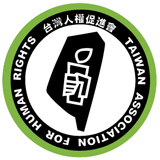Originally by: Yu Yicha, Deputy Secretary-General for the Taiwan Association for Human Rights
Translated by: Chl, Intern
Edited by: Zoe Wang, Intern
Oral arguments for the largest zone expropriation case in Taiwan will begin soon. The development of Taoyuan Aerotropolis has heavily relied on zone land expropriation, which is itself a highly unconstitutional institution that completely deprives people of their property and residence rights and has a non-public nature as it transfers people's property to other private individuals. It does not obey the public interest principle, on the contrary, it allows the the expropriation of land that is “necessary for construction” but is really way to raise funds for development and construction, and forcing public construction costs to be borne by expropriated households, which is already in serious violation of the principle of proportionality and the principle of fairness and affordability.
The first phase of expropriation of Taoyuan Aerotropolis covers an area of 2,599 hectares, which is roughly the size of Liuqiu Island, and it is estimated that at least 6,000 households will be affected. After their appeals to the Executive Yuan were dismissed, the residents in the area who did not want to be expropriated, are asking the court to rule the expropriation unlawful. This time, the court will hear the Taoyuan Aerotropolis lawsuit, whose expropriation plan was imposed by the Civil Aeronautics Administration (CAA).
▍After the land was expropriated, the Urban Planning Committee under the Construction and Planning Agency Ministry of the Interior frequently altered the expropriation plan without being supervised by the Land Expropriation Committee, which is illegal.
The initial Taoyuan Aerotropolis land expropriation plan was approved by the 201st meeting of the Land Expropriation Committee, and the land acquisition was approved in accordance with the contents of the 940th meeting of the Urban Planning Committee. However, the Urban Planning Committee went on to convene 973rd, 982nd, and 993rd meetings thereafter, which drastically altered the contents of the plan without the Land Expropriation Committee's reassessment regarding the public interest and necessity of the land expropriation.
▍The public interest and necessity of the expropriation are vague and lack substantive assessment and clarification.
The Land Expropriation Act stipulates that when expropriating land, the public interest and necessity of the expropriation should be considered in the context of sustainable social, economic, cultural and ecological development, and that a comprehensive assessment and analysis should be conducted. However, the CAA did not make an assessment of the "degree of impact" and only provided a vague statement without substantive assessment and clarification, which resulted in a violation of the expropriation procedure.
Moreover, there are also major flaws in the scope of development. The demand for the industrial area of the Aerotropolis was estimated based on the data of 2006, and only a fixed volume ratio was used to calculate the demand for all the industries, without targeting individual industries within the area. As for the demand for residential areas, it did not take into account the fact that the surrounding areas have already been zoned for residential areas in the existing urban plan.
▍The number of households and population size to be resettled were not confirmed at the time of expropriation, which is not in line with the legal requirements.
Land expropriation will deprive people of their property and lead to forced evictions, which will have a great impact on people's basic human rights. According to the law, the number of households and population to be resettled in the expropriated area should be investigated in detail before the expropriation. In this case, the expropriation was announced in 2020, but the rehousing demand was assessed using a survey report from 2013. The use of outdated information violated the requirements of the Land Expropriation Act and the regulations of zone land expropriation.
▍The responsible administrations failed to weigh the availability of less intrusive means of development in this case.
Taoyuan Aerotropolis is being developed through a zone land expropriation approach, which, compared to the normal land expropriation, urban land replotting, and joint development, significantly infringes on people's rights because of its large-scale nature. However, the CAA has not adequately evaluated and is unable to provide a substantive explanation as to why the development plan of the Aerotropolis is unable to use other methods of land development that does not encroach people's rights.
The Taoyuan Aerotropolis EIA lawsuit is a joint effect of local residents, lawyers, and organizations - the Taoyuan Aerotropolis Anti-Forced Eviction Alliance (航空城反迫遷聯盟), the Taiwan Association for Human Rights (台灣人權促進會), the Environmental Jurists Association (環境法律人協會), and the Environmental Rights Foundation (環境權保障基金會). We invite all of you to continue to follow the development of the case.


